CO2 for Cannabis: How Carbon Dioxide Supercharges Growth and Yield
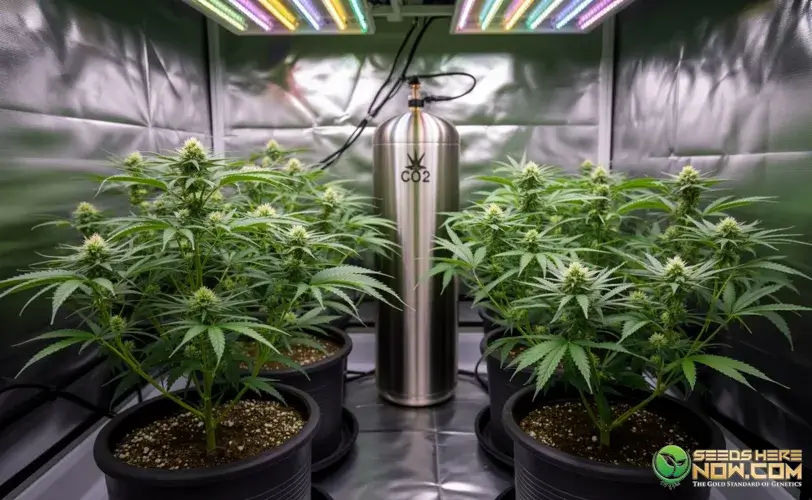
Carbon dioxide (CO2) plays a crucial role in photosynthesis, the natural process that fuels plant growth. For cannabis cultivators, enriching the environment with supplemental CO2 can lead to faster growth, higher yields, and more potent buds. Whether you’re growing in a commercial greenhouse or a home grow tent, understanding how and when to use CO2 for cannabis is essential to maximizing your harvest.
In this guide, we’ll explore everything you need to know about CO2 supplementation in cannabis cultivation. You’ll learn the science behind its use, methods of application, safety considerations, and best practices to get the most from your cannabis crop.
Why Cannabis Plants Need CO2
Photosynthesis is the process by which plants convert light, water, and carbon dioxide into sugars used for growth. CO2 is as vital to this process as light and water. When light is abundant—especially in high-intensity grow rooms—CO2 often becomes the limiting factor.
Cannabis is a C3 plant, meaning it uses the Calvin cycle for photosynthesis. C3 plants are highly responsive to CO2 enrichment. By increasing CO2 concentrations in the grow room, growers can significantly improve photosynthetic efficiency, resulting in faster vegetative growth, increased flower size and density, higher cannabinoid and terpene production, and shorter grow cycles.
Ideal CO2 Levels for Cannabis Growth
Ambient air typically contains about 400 parts per million (ppm) of CO2. While this is enough to sustain basic plant growth, it’s not ideal for high-yield indoor cannabis cultivation.
| Growth Stage | Ideal CO2 Range |
|---|---|
| Vegetative | 800–1,200 ppm |
| Flowering | 1,200–1,500 ppm |
| Late Flower | 400–800 ppm |
Increasing CO2 above 1,500 ppm generally shows diminishing returns and may be harmful to both plants and people if not managed properly.
Pro tip: CO2 enrichment is most effective when temperatures are between 75 and 85 degrees Fahrenheit and humidity is between 50 and 70%.
When To Use CO2 in the Grow Cycle
Vegetative Stage
During vegetative growth, cannabis plants rapidly produce new leaves, branches, and stems. This stage benefits immensely from supplemental CO2. The extra carbon allows plants to photosynthesize more efficiently, resulting in vigorous development.
Flowering Stage
The first six weeks of flowering are the most critical for CO2 supplementation. This is when plants develop their reproductive structures—buds. Elevated CO2 can increase flower size, density, and resin production.
Late Flower
Most growers reduce or discontinue CO2 enrichment around the final two weeks of the flowering stage. By this time, the plants have slowed their metabolic rate and are focused on ripening, so continuing high CO2 levels may no longer provide added benefits.
Methods of CO2 Supplementation
There are several ways to introduce CO2 into a cannabis grow room. Each method has advantages and tradeoffs depending on your grow space and budget.
CO2 Tanks and Regulators
Compressed CO2 tanks are a reliable and controllable source of carbon dioxide. Growers use a regulator with a timer or controller to release CO2 during light hours.
Pros:
-
Precise control
-
No combustion
-
Suitable for small- to medium-sized grows
Cons:
-
Must refill tanks regularly
-
Requires careful pressure regulation
CO2 Burners
Also known as CO2 generators, these devices burn propane or natural gas to release carbon dioxide as a byproduct.
Pros:
-
Ideal for large-scale grow rooms
-
Continuous CO2 supply
Cons:
-
Produces heat and water vapor
-
Not suitable for small tents
-
Requires ventilation and flame safety
CO2 Bags and Exhalation Systems
CO2 bags contain fungi (usually mycelium) that release CO2 slowly as they metabolize organic matter. These are popular in small tents or stealth grows.
Pros:
-
Cheap and easy to use
-
No electricity required
Cons:
-
Low CO2 output
-
Inconsistent results
-
Not suitable for large-scale grows
Dry Ice
Dry ice is solid CO2 that sublimates into gas at room temperature. While effective, it requires daily handling and careful placement.
Pros:
-
Immediate CO2 release
-
Useful for short-term boosts
Cons:
-
Short-lived
-
Expensive and labor-intensive
-
Can damage plants if placed too close
Using CO2 Controllers and Monitors
Precision is key when supplementing CO2. Too little and your plants won’t benefit. Too much and you risk harming both plants and humans.
CO2 monitors provide real-time ppm readings in the grow space. CO2 controllers can automate the release based on these readings. For optimal results, integrate a controller with your grow room’s lighting schedule, as plants only use CO2 during the light cycle.
Safety tip: Never enter a sealed grow room without proper ventilation if CO2 levels exceed 1,500 ppm. Carbon dioxide is odorless and can be dangerous in confined spaces.
Environmental Considerations
Because CO2 works in tandem with other environmental factors, it’s essential to fine-tune your grow room settings:
-
Light Intensity: Use high-powered LEDs or HPS lighting (600–1,000 μmol/m²/s) to ensure plants fully utilize added CO2.
-
Temperature: Maintain daytime temperatures between 80 and 85 degrees Fahrenheit.
-
Humidity: Aim for 50–70% RH, depending on the growth stage.
-
Airflow: Ensure even CO2 distribution with fans and air circulation.
A well-sealed room is essential. Otherwise, CO2 will leak, reducing efficiency and increasing costs.
Is CO2 Worth It?
For many growers, the answer is yes, but it depends on your goals and setup. Here’s a breakdown to help you decide.
Commercial Growers
CO2 is almost always used in large-scale commercial operations. Increased biomass and bud production lead to higher revenue and faster turnaround between harvests.
Hobby Growers
For small-scale growers, CO2 can still be beneficial, especially in high-light environments. However, it’s most cost-effective when all other factors—light, nutrients, airflow, and temperature—are optimized.
A rule of thumb is to invest in CO2 only after your grow room is dialed in. Otherwise, you may not see the benefits.
Common Mistakes When Using CO2
Running CO2 During the Dark Cycle
Plants don’t use CO2 at night. Supplementing during the dark period is wasteful and can lead to unsafe buildup.
Overcrowding the Grow Room
High plant density without proper airflow or light penetration can limit the effectiveness of CO2. Make sure all plants receive adequate light and ventilation.
Ignoring Ventilation
Adding CO2 to a poorly ventilated space can be dangerous. Always ensure your grow area has proper exhaust systems and fresh air exchange, especially if you are using combustion-based CO2 generators.
Skipping Monitoring Tools
Guessing CO2 levels is a recipe for inconsistency. Use monitors to ensure you’re staying within the optimal range.
CO2 and Cannabis Quality
Higher CO2 doesn’t just improve quantity—it can also enhance potency and terpene expression when combined with proper lighting and nutrition. Many growers report higher THC levels and better flavor profiles in CO2-enriched grows, though results vary by strain and conditions.
Recent studies suggest that CO2 enrichment boosts cannabinoid biosynthesis by increasing the availability of carbohydrates, which are building blocks for secondary metabolites like THC and CBD.
Organic and Sustainable CO2 Options
As cannabis cultivators embrace eco-conscious practices, sustainable CO2 solutions are gaining popularity. These include:
-
Bio-reactors: Systems that convert organic waste into CO2
-
Mushroom compost bags: Dual-purpose bags that enrich CO2 and can be composted later
-
Regenerative grow methods: Incorporate plants that naturally exhale CO2 in polyculture systems
While not as precise as tanks or burners, these options align with organic and off-grid growing principles.
Integrating CO2 Into Your Grow Plan
If you decide to use CO2, here’s a simple integration plan:
-
Dial in Basics: Ensure your lighting, nutrients, temperature, and humidity are optimal.
-
Seal the Room: Prevent CO2 loss with airtight construction and lightproof sealing.
-
Choose Your System: Select between tanks, burners, bags, or DIY methods based on budget and scale.
-
Install Controllers: Automate CO2 release with timers or ppm-based monitors.
-
Monitor Progress: Track plant response, adjust levels, and document yield improvements.
-
Harvest and Compare: Measure final yields and quality compared to previous runs.
Final Thoughts
CO2 enrichment can elevate your cannabis cultivation to the next level—if used wisely. From boosting photosynthesis and accelerating growth to improving bud size and cannabinoid content, CO2 is one of the most powerful tools in the modern grower’s arsenal.
However, it’s not a magic bullet. To get the most from CO2, it must be used in harmony with other environmental factors and grow practices. Whether you’re a beginner or a seasoned cultivator, CO2 for cannabis can be the key to unlocking your garden’s full potential.
Frequently Asked Questions (FAQs)
Is CO2 safe to use indoors?
Yes, if managed properly. Use monitors and ensure good ventilation. Avoid high concentrations when humans are present.
Can I use CO2 in an open grow space?
CO2 is only effective in sealed environments. In open spaces, it dissipates too quickly to be beneficial.
What’s the best CO2 level for flowering cannabis?
During peak flower (weeks 2 to 6), aim for 1,200–1,500 ppm. After week 6, taper back to ambient levels.
Will CO2 increase THC levels?
It can. Some growers report higher THC content with CO2-enriched grows, but results depend on genetics and growing conditions.
Can I use CO2 with LED lights?
Absolutely. High-output LEDs are excellent for CO2-enhanced grows because they provide the light intensity needed to take full advantage of the additional carbon.
Suggested Articles
;)
;)
;)



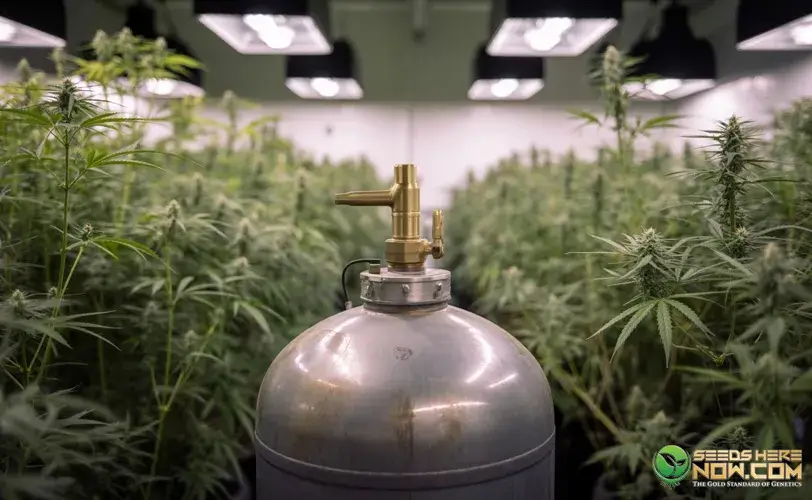
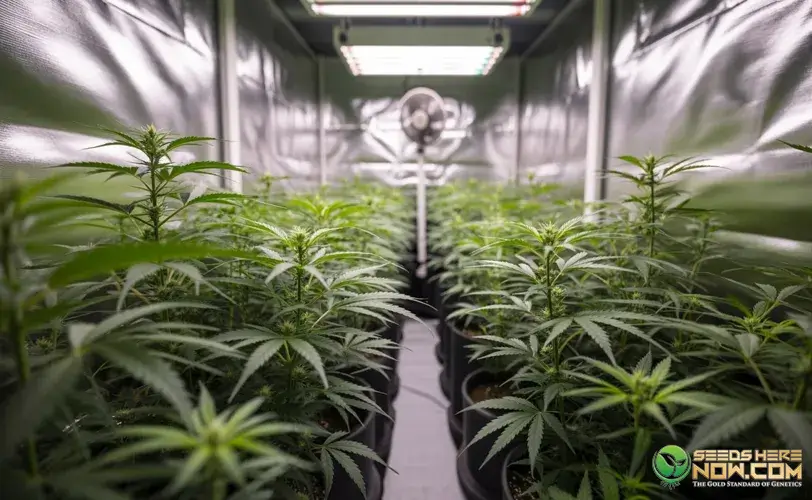
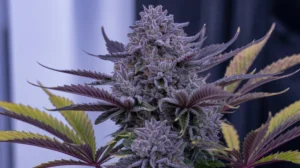
 11 Dec 2025
11 Dec 2025  5 min read
5 min read
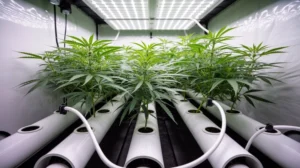
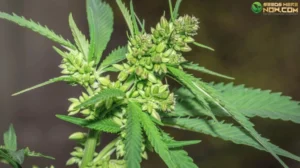
 July 29, 2025
July 29, 2025 


RESPONSES (0)
No responses yet. Be the first to respond!